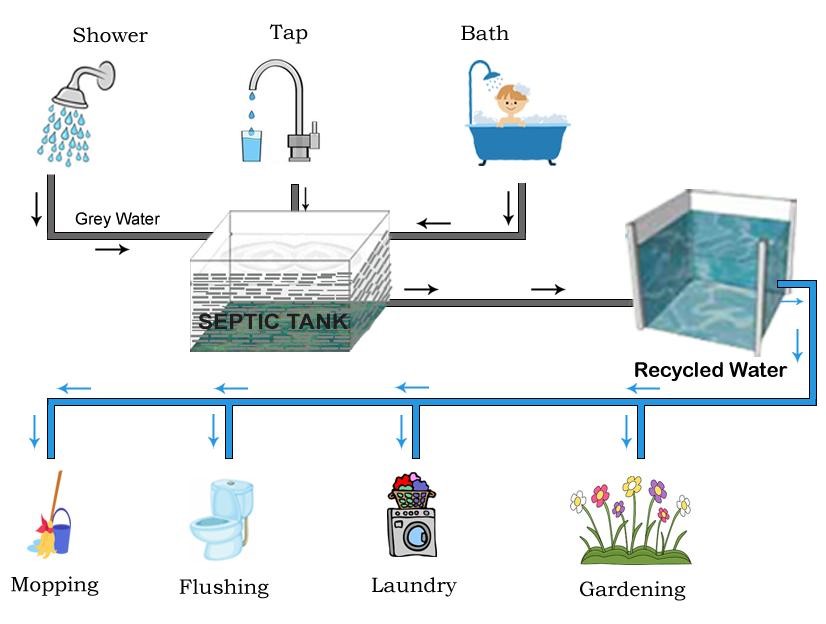Unlike a rainwater collection systems, which depends on rainfall, greywater is in abundance on a daily basis and makes up around 50-80% of wastewater rejected into our sewers. Therefore, greywater recycling offers facilities the opportunity to reduce their water use by up to 50%.
Sources of greywater include, showers, baths, basins and washing machines. It may be infected with a range of soluble and insoluble (particulate) essence such as soaps, detergents, skin, saliva, dirt and lint. Any type of impurity, whether it is detergent, organic, microbial or particulate, must be treated suitably.
Greywater is usually safer to manage and easier to cure and reuse onsite for toilet flushing, landscape or crop irrigation, and other non-potable uses. Therefore, the use of non-toxic and low-sodium soap and personal care products is advised to protect vegetation when reusing greywater for irrigation aims.
True greywater systems are more complicated than simply capturing waste water in a bowl. Greywater allowed to flow from collection devices to the greywater treatment system via gravity or siphonic action. Surplus greywater shall be collected and discharged directly to the sewer.
Greywater treatment shall consist of the following components:
A. Pre-treatment
B. Biological treatment
C. Filtration
D. Disinfection
Pre-treatment would comprise a thin screen to remove hair, soap, and other particulate matter in the greywater. The screen will have a spacing of 2 mm.
In case the greywater is collected from kitchen sinks and dishwashers, pre-treatment will also include an oil and lubricant trap. An automatic oil and lubricant trap, where the oil is skimmed out automatically using a timer or sensor device, would be used.
The thin screen would preferably be of the self-cleaning type to restrict the dependence of the user cleaning the screen, to maintain system performance.
Biological treatment will be included to remove organic matter and other pollutants in the greywater. The most common types of biological treatment are biological aerated filter (BAF), rotating biological contactor (RBC), and sequencing batch reactors (SBR).
Filtration would be included to achieve the required effluent turbidity. Many types of filters are commercially available and they are capable of effecting high effluent quality standards on a small footprint.
Disinfection is required as the final treatment step. Chlorine is added to protect the water while in storage and the reticulation system – the only time any chemicals are used throughout the treatment process.
The disadvantage of recycled water is that some systems can be expensive. It may also need more maintenance than a regular sewer or septic system. Your soil may be too permeable or not permeable enough, and you may need to make adjustments.
Recycling water has many benefits; most apparently that it saves potable water. Apart from conserving potable water, greywater can admittedly be better for plant life. Greywater ordinarily contains detergents that have nitrogen or phosphorus, which are plant nutrients. Greywater also increases the life and capacity of your septic system since usage decreases. Recycling water saves money as well. With water costs increasing, many people who prefer to use greywater have lower monthly bills.



